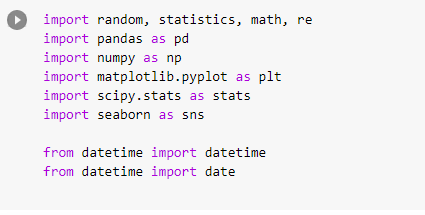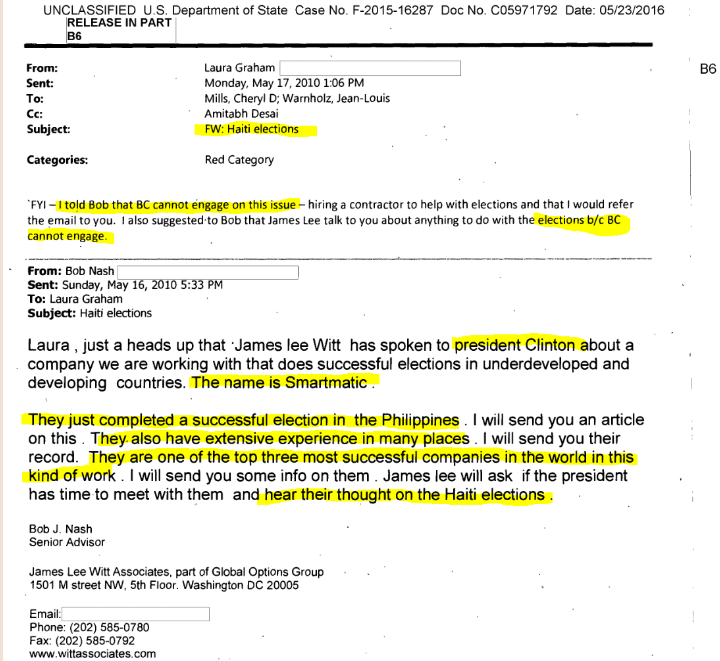If you’ve donated to @BorahaeFunds, I would suggest disputing with your bank account in hopes to get your money back and defund them. The amount of money they have... it’s a scam at this point if they’re going against donors/@BTS_twt wishes of funding Life Goes On.
More from Fraud
A thread on attempted election fraud in Canada: First, most breaches of election law here are related to financing, not illegal voting or ballot-box stuffing. And most are minor. That’s because our elxn finance laws are extremely tight and contribution/spending limits low. 1/
I covered two of the best-known cases in recent years: “robocalls” in 2011 election and the “in-and-out” affair of 2006. You probably heard a lot about the former and maybe nothing of the latter. Both were important for different reasons. 2/
In robocalls, the Conservative party’s voter-tracking database, CIMS, was used to make fraudulent automated calls to about 7,000 identified Liberal voters in Guelph, Ontario, directing them to the wrong polling location. The scheme didn’t work. The Liberals won the riding. 3/
Elections Canada caught on to the scheme on the day the calls were made, election day, and began investigating almost immediately. The long and complex investigation found the calls originated with someone working for the Conservative candidate in Guelph. 4/
After a trial, a lone campaign staffer was found guilty. He served jail time. The judge said it appeared to him others were likely involved but no one else was charged. Throughout, the CPC denied any knowledge of the scheme. 5/
Hey Canada, can we talk about how Conservatives are fundraising based on dangerous lies & how it needs to stop immediately? #cdnpoli pic.twitter.com/2LSHcJtsMf
— \U0001f142\U0001f130\U0001f13c\U0001f138 (@samifouad) January 8, 2021
I covered two of the best-known cases in recent years: “robocalls” in 2011 election and the “in-and-out” affair of 2006. You probably heard a lot about the former and maybe nothing of the latter. Both were important for different reasons. 2/
In robocalls, the Conservative party’s voter-tracking database, CIMS, was used to make fraudulent automated calls to about 7,000 identified Liberal voters in Guelph, Ontario, directing them to the wrong polling location. The scheme didn’t work. The Liberals won the riding. 3/
Elections Canada caught on to the scheme on the day the calls were made, election day, and began investigating almost immediately. The long and complex investigation found the calls originated with someone working for the Conservative candidate in Guelph. 4/
After a trial, a lone campaign staffer was found guilty. He served jail time. The judge said it appeared to him others were likely involved but no one else was charged. Throughout, the CPC denied any knowledge of the scheme. 5/
You May Also Like
Nano Course On Python For Trading
==========================
Module 1
Python makes it very easy to analyze and visualize time series data when you’re a beginner. It's easier when you don't have to install python on your PC (that's why it's a nano course, you'll learn python...
... on the go). You will not be required to install python in your PC but you will be using an amazing python editor, Google Colab Visit https://t.co/EZt0agsdlV
This course is for anyone out there who is confused, frustrated, and just wants this python/finance thing to work!
In Module 1 of this Nano course, we will learn about :
# Using Google Colab
# Importing libraries
# Making a Random Time Series of Black Field Research Stock (fictional)
# Using Google Colab
Intro link is here on YT: https://t.co/MqMSDBaQri
Create a new Notebook at https://t.co/EZt0agsdlV and name it AnythingOfYourChoice.ipynb
You got your notebook ready and now the game is on!
You can add code in these cells and add as many cells as you want
# Importing Libraries
Imports are pretty standard, with a few exceptions.
For the most part, you can import your libraries by running the import.
Type this in the first cell you see. You need not worry about what each of these does, we will understand it later.

==========================
Module 1
Python makes it very easy to analyze and visualize time series data when you’re a beginner. It's easier when you don't have to install python on your PC (that's why it's a nano course, you'll learn python...
... on the go). You will not be required to install python in your PC but you will be using an amazing python editor, Google Colab Visit https://t.co/EZt0agsdlV
This course is for anyone out there who is confused, frustrated, and just wants this python/finance thing to work!
In Module 1 of this Nano course, we will learn about :
# Using Google Colab
# Importing libraries
# Making a Random Time Series of Black Field Research Stock (fictional)
# Using Google Colab
Intro link is here on YT: https://t.co/MqMSDBaQri
Create a new Notebook at https://t.co/EZt0agsdlV and name it AnythingOfYourChoice.ipynb
You got your notebook ready and now the game is on!
You can add code in these cells and add as many cells as you want
# Importing Libraries
Imports are pretty standard, with a few exceptions.
For the most part, you can import your libraries by running the import.
Type this in the first cell you see. You need not worry about what each of these does, we will understand it later.






















